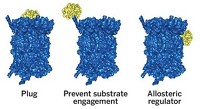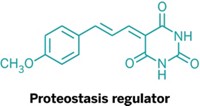Advertisement
Grab your lab coat. Let's get started
Welcome!
Welcome!
Create an account below to get 6 C&EN articles per month, receive newsletters and more - all free.
It seems this is your first time logging in online. Please enter the following information to continue.
As an ACS member you automatically get access to this site. All we need is few more details to create your reading experience.
Not you? Sign in with a different account.
Not you? Sign in with a different account.
ERROR 1
ERROR 1
ERROR 2
ERROR 2
ERROR 2
ERROR 2
ERROR 2
Password and Confirm password must match.
If you have an ACS member number, please enter it here so we can link this account to your membership. (optional)
ERROR 2
ACS values your privacy. By submitting your information, you are gaining access to C&EN and subscribing to our weekly newsletter. We use the information you provide to make your reading experience better, and we will never sell your data to third party members.
Biological Chemistry
Finding a Pathway for Necrosis
Small molecule can block cell death, suggesting potential stroke treatment
by Sophie L. Rovner
July 4, 2005
| A version of this story appeared in
Volume 83, Issue 27
BIOCHEMISTRY

Small molecule can block cell death, suggesting potential stroke treatment
At least one type of necrosis--a form of cell death--is regulated and proceeds according to a defined biochemical pathway, researchers at Harvard Medical School say.
What's more, the researchers have identified a small molecule that can block the pathway, a finding that may lead to treatments for medical conditions, such as stroke, that involve necrosis (Nat. Chem. Biol. 2005, 1, 112).
Conventional wisdom says that cell death proceeds by one of two mechanisms: apoptosis and autophagy, in which a cell is dismantled in a disciplined manner according to programmed biochemical steps, and necrosis, in which a dying cell bursts apart, scattering its contents and damaging neighboring cells.
The different death mechanisms are interrelated. Apoptosis is initiated when ligands bind to a cell's "death receptors." The ensuing steps that lead to destruction of the cell involve cysteine proteases known as caspases. Blocking the action of caspases stops apoptosis, but in some cases is not enough to prevent the cell's death. Instead, the cell self-destructs through a type of necrosis. Harvard Medical School cell biologists Junying Yuan and Alexei Degterev and their colleagues have discovered that it is possible to block this kind of necrosis, which they call necroptosis.
The researchers screened more than 15,000 compounds to find a chemical that could prevent necroptosis. They discovered that necrostatin-1 (Nec-1), a tryptophan derivative, could do so. Demonstrating that necroptosis can be blocked indicates that the process is a regulated cell-death pathway, the researchers believe.
David Wallach, a biological chemist at Weizmann Institute of Science, Rehovot, Israel, suggests in a commentary that the work needs to be interpreted with care. Because the target of Nec-1 is unknown, "the existence of a distinct necrotic pathway is ... yet to be formally proven," Wallach notes. That proof may not be long in coming, however: Yuan says her team has made "significant progress" in identifying Nec-1's target.
In the meantime, Nec-1 can "facilitate exploration of two important aspects of the necrotic process," Wallach writes. One is the examination of the relationship of death-receptor-induced necrosis to autophagy, which degrades cellular components by engulfing them within membranes and digesting them. The other is the role of necrosis blockers such as Nec-1 under pathological conditions. Wallach explains that the method employed by Yuan's team to explore the pathways and molecules involved in cell death will aid in the development of drugs to treat pathologies caused by such cell death.
In the case of stroke, Yuan's team showed that Nec-1 limits brain damage in a mouse model of stroke, indicating that necroptosis is involved in this condition.






Join the conversation
Contact the reporter
Submit a Letter to the Editor for publication
Engage with us on Twitter